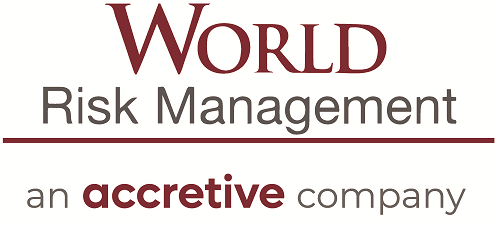
Oct 24, 2018 | Loss Control
An often overlooked part of the massive losses suffered by businesses, academic institutions, and other organizations as a result of fires, floods, and other severe weather is the damage to critical records and documents. By not protecting and ensuring these documents, organizations can face significant business continuity losses and compromised client services. There are several important steps that prudent risk managers can take to ensure that their critical documents are managed properly and protected as much as possible from a potentially damaging event.
1. Understand Document Retention Requirements and Dispose of Unnecessary Documents
Document retention requirements are determined by city, state and federal regulations, and can vary by document type. A general rule of thumb is that financial records should be kept for seven years. Health records for children must be retained for 25 years. Deeds and loan documents must be kept permanently. Establishing a consistent base volume of stored records and documents can help determine the necessary level of insurance coverage. The longer the retention period, the greater the risk so purging those documents that are not necessary to retain can reduce the risk that damage will occur.
2. Assess Document Exposure
Determining the level of document exposure depends on the answers to several questions. First and foremost, what is the volume of critical documents? The more documents stored, the greater the cost to insure them. The more densely they are stored, the greater the localized risk.
What type of recovery service is necessary? This answer will vary from business to business. If original documents are required, they will likely be returned after drying and cleaning with visible signs of damage, such as stains and bleeding of ink. This may be fine for archived files but may cause problems for businesses such as medical facilities, law and accounting firms, and their clients. In another instance, a mortgage title company may likely want a drying, sterilization and cleaning option even when their documents are affected by Category III water (highly contaminated water such as sewage or floodwaters, also known as blackwater). Faced with the same dilemma, a medical facility is likely to prefer reproduction or imaging.
Is immediate access to documents important in the wake of a calamitous event? This will determine which of the two basic techniques for document drying is most appropriate. Vacuum freeze drying provides the best results for books and clay-coated paper. However, capacity is limited by the size of the drying chambers and backlogs can quickly develop if a document recovery specialist relies solely on this method. Desiccant drying effectively processes large quantities of documents, but causes wrinkling and requires trained technicians to avoid secondary damage to documents during the recovery process.
The information gleaned from the answers to these questions can be extremely useful in determining the potential cost of document and record restoration. However, there is no standard formula or computer model to generate cost estimates. Instead, the number of documents required for retention and the qualitative requirements of that retention is used to develop a hypothetical, industry-average cost estimate for a worst-case scenario loss.
It is important to remember, however, that any assessment of this kind cannot determine the cost of a total loss. Establishing the cost of drying 100 boxes of documents submerged in water for two days is doable. Understanding the cost of recovering those 100 boxes after they have been burned to ash is not.
3. Ensure Adequate Insurance Coverage
The cost of insurance is typically determined by the cubic feet of stored documents and records to be covered. A range of $100 to $1,000 per cubic foot can provide a general low-to-high estimate of coverage needed. Depending on the potential needs within that range, the type of coverage is another critical consideration.
Many insurance policies will specifically exclude coverage for documents under the contents verbiage of the policy. Instead, insurers want customers to address specific coverage of documents under the valuable papers portion of the policy. Valuable papers coverage is often described in the policy as the time to research, verify, and recreate files or information that have been damaged in a loss. Valuable paper coverage is broad and often will address the issue of document reproduction or imaging.
Valuable papers coverage is a reasonable “extension of coverage” on insurance policies, with coverage amounts ranging from $25,000 for standard coverage to several million dollars for specialty classes of businesses. Standard limitations may be adequate for small losses, but most likely will not be adequate to cover a major loss that would require the treatment of large numbers of documents. Ironically, the rule of thumb in the document restoration business is that the average client is under-insured.
Often, the key variable is how the adjuster will interpret the policy. Some adjusters will allow drying and cleaning documents to fall under business personal property coverage because the documents are tools used for conducting business. This enables the original documents to be dried and/or cleaned and returned to use. The argument is documents such as medical charts are not just valuable papers or papers per se. The information on them is organized, regulated in how it can be amended or altered, and the charts must be bound in a specific manner.
An important element of adequate insurance coverage is the quality of the claims handling process, which can be defined as the immediate response to the loss. Specific wording to this effect in the insurance policy will help, as will periodic meetings among the insured customer, insurance professional, and document restoration firm over the course of the policy period.
4. Preselect the Right Document Recovery Firm
There are only a handful of qualified document recovery firms in the United States. Preselecting one of them is not a process that should be taken lightly. Risk managers, who are serious about defining their exposure, should conduct in-person interviews with key document specialists — as opposed to area representatives or salespeople — from the firms they are considering.
There is no standard pricing in the document recovery industry. Basic services are typically measured by the cubic foot. However, one firm may charge $40 per cubic foot for drying and $35 per cubic foot for labor, handling, and packaging, while another will charge an all-inclusive $72 per cubic foot for these services.
There are a number of differentiators among these firms in addition to price. Do they have the capability to handle a document restoration project on-site if necessary? What security measures do they employ — both on-site and in their plant? How quickly can they respond to a loss and provide a complete quote for the work? What is their backlog? Can they provide access to documents during the recovery process? Do they do the work in-house, which is preferable to ensure a timely response and open lines of communications between client and document recovery firm, or do they subcontract to another vendor? Do they itemize invoices, including all services and supplies? Are they appropriately insured, including sufficient pollution coverage?
Lastly, there are a number of external signals about a document recovery firm’s qualifications. Firms that are preferred vendors with well-known national insurance carriers have qualified on the basis of security, financial stability, quality control and accountability. Letters of recommendation from previous clients is also a good indicator of past performance.
Source: Risk Management Monitor
Author: Rob Schmidt

Aug 31, 2018 | Informative, Loss Control, RIsk Management News
While the number of incidents and casualties declined in 2017, a report released Monday by Marsh L.L.C. said terrorism is still a significant threat and that the insurance market is adapting to handle the evolving risk.
Marsh’s 2018 Terrorism Risk Insurance Report, which explores the state of the terrorism insurance marketplace, said that in the wake of recent events, terrorism insurers are expanding terrorism definitions to include active assailant events.
In some cases, the report said, insurers also are developing specialty products that offer first- and third-party business interruption protection for businesses that suffer lost income or revenue without the need for a direct property damage trigger.
Although fewer people were killed in terrorist attacks in 2017 than in 2016, the Marsh report said the means of attack and perpetrators have shifted.
“Past attacks were carried out primarily by specific groups against perceived high-value-high-profile targets,” the report said. “While that threat remains, many recent attacks have come against soft targets and been perpetrated by ‘lone wolves’ and small groups with no direct connection to known terrorist organizations. Weapons of choice now include vehicles, knives and other handheld devices.”
In 2017, the report said, pricing increased in five of the 17 industries surveyed by Marsh, with the sharpest increases being felt by hospitality and gaming companies, public entities and nonprofit organizations, which have been targets of terrorist acts in recent years.
Pricing declined in seven industries, the report said, most notably for energy and mining and construction companies, reflecting the generally positive conditions in the property insurance market prior to the 2017 Atlantic hurricane season.
Sixty-two percent of U.S. companies in 2017 purchased coverage embedded in property policies under the Terrorism Risk Insurance Program Reauthorization Act of 2015, or TRIPRA. Companies in the Northeast U.S. were most likely to purchase terrorism insurance, Marsh said.
The number of Marsh-managed captive insurers actively underwriting one or more insurance programs that access the TRIPRA increased 44% to 166 captives in 2017.
After incurring sizable ransomware losses in 2017, kidnap and ransom insurers are seeking to restrict coverage for cyber risks in their policies.
Terrorism insurance capacity remains strong, the report said, but pricing could increase as global insurance costs generally increase following natural catastrophe losses in 2017. January 2018 year-over-year pricing changes for a majority of reinsurance program renewals that included terrorism coverage averaged flat to an increase of 10% on a risk-adjusted basis, according to the report.
The Marsh report made several suggestions for businesses in the face of evolving terrorism risk, including continually reviewing and reevaluating their risk financing programs to ensure they have adequate protection for property, business interruption, workers compensation, general liability and cyber losses.
The report also encouraged businesses to effectively model their terrorism risk and to build and test robust crisis management and business continuity plans.
Author: Rob Lenihan
Source: Business Insurance

Aug 24, 2018 | Blog-All, Informative, Loss Control, RIsk Management News
Recently, I had the chance to spend some time at Walt Disney World in Orlando, Florida, when I attended the NAMIC conference in February. One session included a presentation by Barry Dillard, director of claims for Walt Disney World, where he shared the company’s approach to handling a wide variety of claims.
I sat down with their vice president of risk management to learn about some of the strategies they employ, and I had the opportunity to tour Walt Disney World itself to peek behind the curtain and see how this massive theme park creates the magic for its guests and cast members while keeping everyone safe.
Believe it or not, the Walt Disney World Resort covers 40 square miles and is twice the size of Manhattan. Within its confines, this world-class attraction employs 75,000 cast members, each of whom plays a critical role in spreading the Disney magic. Their emphasis on safety is both taught and caught, which is especially important when serving the millions of guests who visit the Disney attractions around the world.
The Walt Disney Company is extremely proactive in their risk management strategies — it truly is everyone’s responsibility — not just the realm of those at the corporate level. As is often the case in life, the simplest things can make the biggest difference. Merely walking the parks, hotels, shops, and restaurants can yield valuable information, allowing cast members to identify small issues before they become larger ones. Even in one of the most magical places on earth – reality tends to intrude.
Unexpected risks arise every day and training plays a key role in mitigating them. Hackers are constantly devising new ways to access company information or hold it for ransom. The use of ransomware is expected to increase 350% this year, so being vigilant and backing up data has never been more important.
The number of shooting incidents in businesses and other settings is increasing at an alarming rate. Knowing what to look for and how to respond in these situations can literally be the difference between life and death.
For better or worse, new risks are changing our behavior — how observant we are in open spaces of our surroundings, what we post on social media, where and how we protect our personal information, what we open online and how we train our staffs. It really is the smallest things that can make the biggest difference in keeping people safe.
Author: Patricia L. Harman
Source: PropertyCasualty360

Jul 13, 2018 | Informative, Loss Control, RIsk Management News
In the era of 24-hour news coverage, and in the aftermath of highly publicized catastrophic events including hurricanes, earthquakes and terrorist attacks, insurance policyholders have very little patience for a protracted claims process.
At the risk of alienating customers, especially younger policyholders who grew up in a digital age, the insurance industry must adapt to keep up with the speed of business and increased expectations regarding how companies administer claims.
Consumer expectations aside, there’s also pressure from internal stakeholders who expect up-to-date evaluations of risk and more efficient business practices that drive down costs and create competitive advantages.
So, how can insurance companies redesign their business models, particularly the claims administration process?
Leveraging the wisdom of crowds
With these challenges in mind, innovative insurance companies increasingly see a reason to incorporate alternative data sources as an element of their insurance contracts. Given the prevalence of smartphones and the general public’s willingness to use their social media accounts to share events as they happen, real-time social media posts are often the fastest indications of a breaking event. In fact, governments, news agencies, and businesses commonly rely on social media to keep track of breaking news stories.
The real-time nature of social media dovetails with the need for insurance companies to pick up the pace when processing claims. When analyzed correctly, social media data can inform a parametrics insurance contract, triggering the payment of a predetermined amount when conditions exceed certain metrics, such as the wind speed associated with a hurricane or tremors accompanying an earthquake. In addition to natural disasters, alerts derived from social media could justify payouts of a parametric insurance policy covering a man-made event, such as a terrorist attack.
In short, when a significant incident impacts policyholders, a parametric contract that relies on social media alerts can generate a payment. And there’s an added bonus: After an event, the real-time information from social media becomes historical information that helps underwriters assess future policy risks.
A front-row seat to insured events as they unfold
As the recent hurricane in Puerto Rico or the 2017 terror attack in the Parson Green Underground station in London demonstrate, a spike in volume of real-time social media posts is a leading indicator of breaking news. In the simplest terms, social media posts emanating from Puerto Rico or in the vicinity of the Parson Green station provided compelling evidence of an incident. Over time, as the volume of posts grows, the evidence of a covered event becomes incontrovertible.
Nonetheless, insurance companies don’t need to wait until there’s a vast amount of social media posts to initiate the claims process. With the right tools in place to mine social media, insurance companies can be alerted to an event before the volume of posts surges exponentially.
Whether an insurance company relies on the first post to act or decides to wait until the volume of social media posts mushrooms, the corroborative nature of social media, including the analysis of geolocated posts, offers an up-to-date portrayal of events.
While incorporating alternative data as part of parametric insurance contracts may face organizational resistance, making use of social media data benefits those covered by policies, as well as the insurers themselves — removing the burden of assessing a loss solely off insurance adjusters and shortening the time needed to assess a loss and issue a payment. Customers who are helped quickly are also less likely to complain about service and may support the insurance company publicly, contributing to brand strength.
The rush to leverage social media alerts
Up until recently, the insurance industry has resisted the pressure to jump on the technology bandwagon. However, in the midst of unrelenting changes in consumer expectations, and the proliferation of online insurance upstarts determined to disrupt the industry, many insurance companies are in the process of overhauling their business models and embracing the latest technology.
In particular, the claims process is ripe for change. While the industry’s staid approach to claims used to suffice, today’s policyholders no longer deem it acceptable for insurance companies to take months to evaluate and pay out claims. In order to attract and retain customers, while reducing claims processing costs and creating competitive advantages over less refined competitors, insurance companies must build business models that allow for a faster, more agile response. That means looking beyond the traditional tools and approaches for a nimble solution with the potential to support the accelerated payouts policyholders expect.
Using alerts derived from social media provides claims processors with real-time, actionable alerts, including images and video that offer third-party evidence of an event and the extent of the damage, and consequently, the ability to expedite and automate policy payments. Insurance companies that tap into social media data to speed the claims process may impress policyholders by avoiding typical operational challenges and may help the strength of public brand perception.
The competitive landscape of shifting business models may propel many insurance companies to use social media data as an indispensable linchpin in their revamped claims administration process.
Source: Property Casualty 360
Author: Dillon Twombly

Apr 19, 2017 | Loss Control, RIsk Management News
The robots are coming. In fact, in many places, they have already arrived.
Some consider software automation such as robo-advisors to be robotics, but there is also considerable progress in the world of the physical, tangible robots that are very similar to the ones made popular by a century of science fiction stories.
We are headed toward a future of robots all around us — on land, sea, and air; in our homes, businesses, and communities. Today, we are witnessing the first glimpses of this robot revolution. The rate of robot proliferation and adoption is astounding, which means that a future with billions of robots may not be that far off.
The International Federation of Robotics reports that there are expected to be 31 million household robots in service by 2019. There are already millions of industrial robots in use; over a quarter of a million were sold just last year. Add that to the millions of drones being sold and robots in business, agriculture, and other settings, and it becomes clear that robots are delivering good value and market acceptance.
Recent examples of robotics pilots and implementations demonstrate some of the future potential:
- Takeout food delivery: There are current pilots underway in which small mobile robots deliver takeout orders from restaurants in Washington, DC and Hamburg, Germany.
- Robotic prostheses: 3D printing and AI advances have enabled low costs and customization of robotic arms, hands, and legs. Wearable robotic gloves that allow the disabled or elderly to have hand function are now available.
- Robotic kitchen assistant: A robot called Flippy has been proven to cook burgers at a fast food restaurant more efficiently and at less cost than humans.
- Insurance sales: Meiji Yasuda Life will use 100 humanoid robots in branch locations to answer sales and service questions and support sales personnel.
At issue now is how the new wave of robots will alter risks in the world and what that means for the insurance industry. It’s easy to jump to a vision of the world of the future controlled by robots, à la the Terminator movie series. But right now, Elon Musk, among other prominent tech figures, is truly worried about an AI apocalypse in which robots and other AI driven devices run amok and destroy the world and civilization as we know it.
While it is advisable and even imperative to think about these long-term possibilities and establish the right governance today, the truth is that robots are already affecting risks — both positively and negatively. Insurers should consider these aspects of a world with more and more robots:
- Job loss: Robots are likely to replace human workers in many different professions and in many different industries.
- Worker safety: Robots can operate in dangerous environments, where there may be toxic chemicals or otherwise unsafe conditions for humans. Robots can also work alongside humans, handling tasks that could help to reduce workplace injuries and accidents.
- Elder/disabled care: Robots in homes and healthcare settings may allow more individuals to live independent lives and reduce the need for assisted living facilities.
- Increased cyber exposure: Robots will collect and create vast amounts of data about the world around them. Like any other environment with electronic data, these will be subject to hacking and criminal abuse.
- Robot-caused injuries: Malfunctioning robots in industrial or residential settings could inadvertently cause injury or death to humans. There are examples of this already, and the potential increases as robots become pervasive.
It should be evident from these few examples that insurance coverages will need to evolve correspondingly. In some cases, the use of robots will decrease risks and can be leveraged for loss control. In other cases, new risks will emerge and will demand insurance solutions for individuals and businesses.
No one can predict with accuracy how rapidly robots will be adopted and spread across the world. But wise insurers will begin planning for a robot revolution, today.
Source: Property Casualty 360
Author: Mark Breading
Photo: ShutterStock





